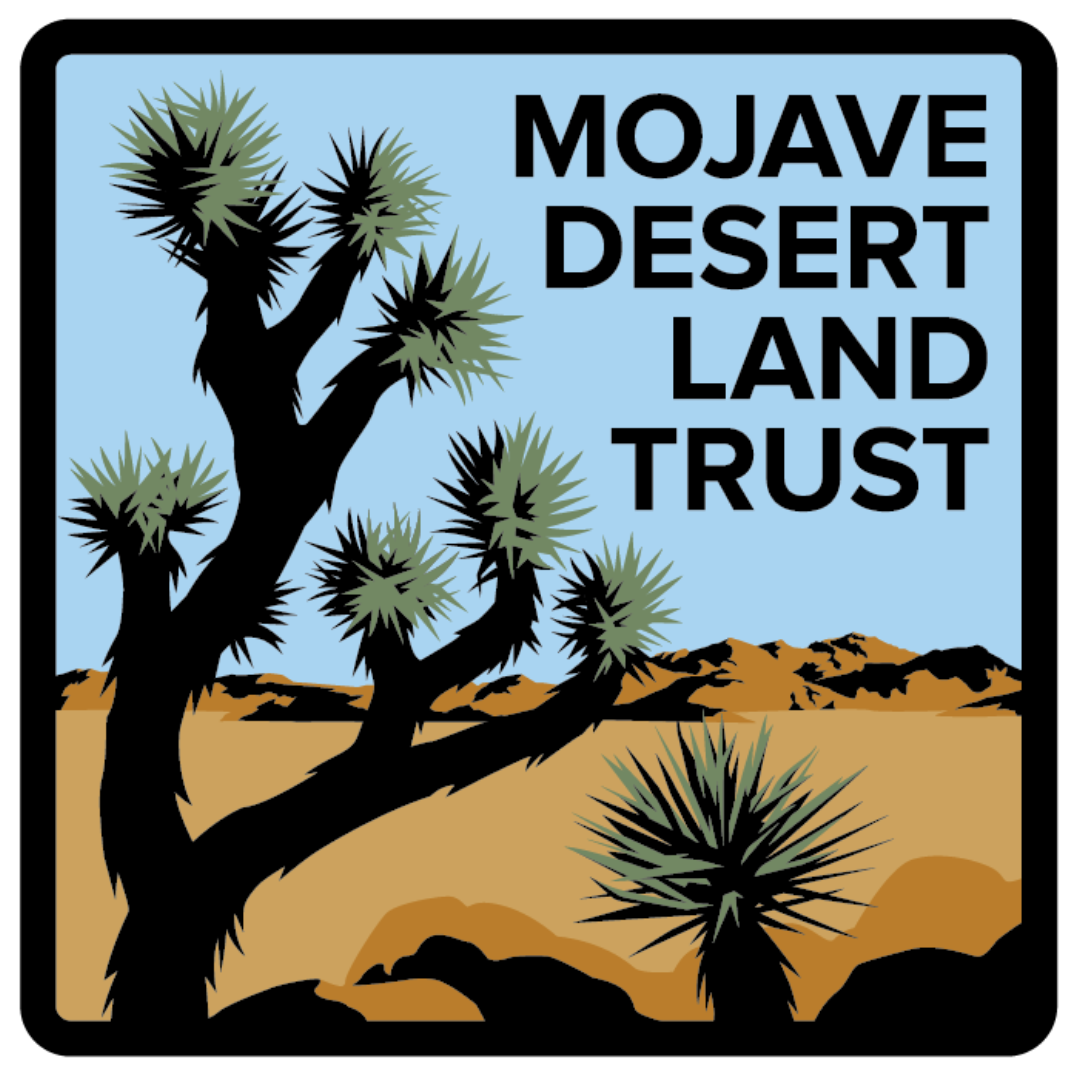Visiting Joshua Tree: a desert dweller’s guide
By Jessica Sain-Baird, MDLT volunteer
Photo: A group of people photographed from behind walking a trail through a desert landscape at sunset. Jessica Dacey
About three million people visit Joshua Tree National Park each year, and it’s the eighth-most visited U.S. national park overall. If you’re one of the many curious explorers coming to Joshua Tree this season, it’s smart to first familiarize yourself with the sensitive desert landscape.
As a nonprofit located in Joshua Tree — and stewards of the California desert ecosystem — the Mojave Desert Land Trust recommends the following for a safe and sustainable trip.
Checklist: what to bring to Joshua Tree
Wondering what to pack? It depends how off-the-grid you plan to go, but here are some basic recommendations.
Water: It’s only available in a few places within the park, so bring your own, preferably in a reusable bottle. We recommend at least one gallon of water per person, per day.
Snacks: Joshua Tree is home to a few restaurants and shops, but you won’t find food within the park. It’s smart to bring food (in an airtight container!) for safe desert exploration.
Closed-toe shoes: Protect your feet in the desert terrain by wearing closed-toe shoes. Hiking shoes are ideal.
Loose-fitting clothing: Breathable fabrics like cotton and linen will be most comfortable. And desert evenings can be surprisingly cool — a sweatshirt or warm pants can come in handy.
Sunglasses, hat, and sunscreen: These essentials will help shield you from the desert’s strong sunshine.
Printed maps: Download Joshua Tree National Park maps or visit the California Welcome Center on your way into town for printed maps and expert visitor tips.
Cell phone and/or GPS tracker: It’s hard to find cell service in the park and in some more remote parts of town, so be prepared. A handheld GPS receiver is a good backup for navigation and connection if you’re hiking in remote areas.
Red headlamp: Red lights are easier on the eyes in a dark setting and when stargazing. Red light is also less disruptive to the nighttime environment and others around you.
How to explore Joshua Tree responsibly
Be respectful as you visit: Remember that Joshua Tree is a community with year-round residents and wild animals. The Mojave Desert Land Trust works to protect the wildlife corridors of this area, keeping land accessible and habitable for Joshua Tree’s animals, plants, pollinators, and other living things.
Stay on designated routes and trails: The desert soil is fragile and can take decades to recover from disturbance. Protect wildlife habitat by sticking to official routes. Prioritize a full tank of gas when heading out in the desert or charge up if you’re driving an electric vehicle.
Pack it in, pack it out: The desert is a sensitive ecosystem, so be mindful of keeping it clean! Take your trash with you and don’t litter.
Respect wildlife: Observe from a distance and never feed wild animals. It's not uncommon to encounter coyotes, snakes, mountain lions, and other animals here, and they can be unpredictable. If you have a pet, wildlife can perceive them as threats. Control your pet at all times. And if you’re visiting the park, there are many places where pets aren’t allowed.
Observe but don’t touch cultural or historic structures and artifacts: Joshua Tree National Park Visitor Center in the neighboring town of 29 Palms features a new, excellent exhibit for learning about and appreciating the rich history of this land.
Brush up on camping rules: Joshua Tree National Park hosts several campsites. Learn about the park’s reservation and first-come, first-served camping options and camping regulations.
Avoid light pollution: Folks are drawn to the desert for many reasons, one being its vast, star-filled sky. Minimize your outdoor light so we can all take in this beauty at night.
Keep noise to a minimum: Another reason people love the desert is the serene quiet. Sound travels far here, so keep your voice low.
Conserve water: It’s a precious resource.
Cherish the trees: Western Joshua trees are delicate and protected by the Western Joshua Tree Conservation Act. Don’t climb or hang anything from them.
Photo: A young man thrilled to see a native plant sprouting from a crack in a boulder. Ella DeMaria
You’re now prepared for a safe and positive trip to the desert!
Ready to go even deeper with Joshua Tree knowledge? Prepare further with Joshua Tree National Park and these local resources: publications Joshua Tree Voice, Hi-Desert Star, Pioneertown Gazette, and Desert Sun; radio station Z107.7; podcast 90 Miles from Needles; and periodical/radio show Desert Oracle.


